
COVID-19, a global pandemic, is changing the way buildings are designed. Many projects, whether in early design or later phases, are exploring design iterations with a focus towards minimize the risk of spreading the virus. Currently, the World Health Organization (WHO) and other authorities have identified inhalation or direct contact with virus droplets, and indirect contact through droplets with contaminated surfaces as the two primary causes for the rapid spread of the virus. Below are 3 key strategies to reduce the spread inside buildings and their impact on a building's Energy Use Intensity (EUI).
1. Adjusting the Occupant Density
It is believed that the virus droplets are relatively heavy particles which drop out of the air after traveling a short distance of 3 to 6 feet. Due to this fact the practice of 'social distancing' i.e. staying 6 feet apart from others to avoid the transmission came into place.
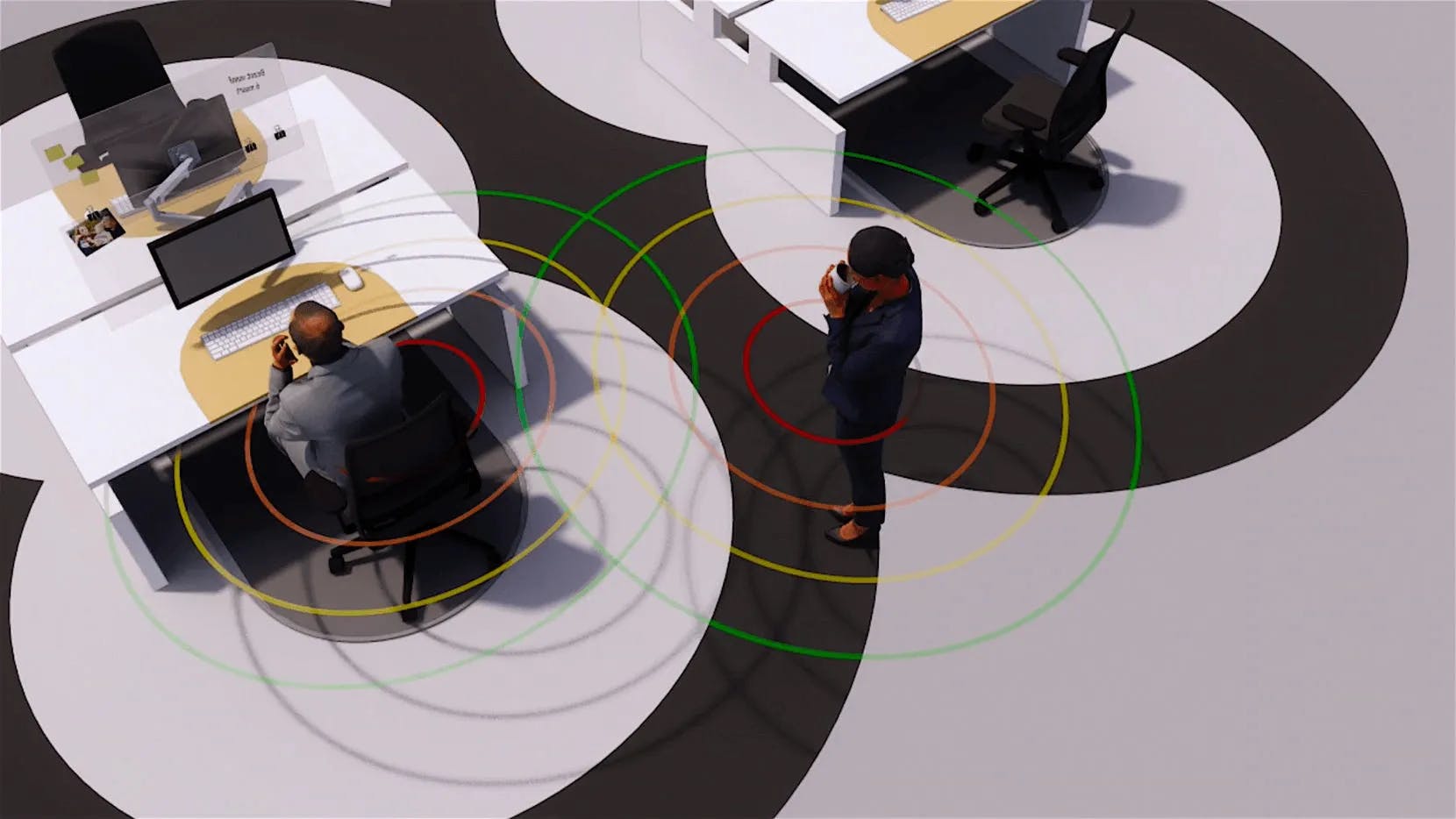
(Image Courtesy: https://www.dallasnews.com/)
From design perspective, it is recommended to imagine a 6ft circle allocated for each occupant. Therefore, the minimum area per person essential to practice social distancing would be Pi*(radius)*(radius), which comes down to 113.04 ft2. Any building type which has more ft2/person value than 113.04 will be able to maintain social distancing inside the space.
According to the ASHRAE user's manual, the office building type should have 275 ft/person and the education building type should have 75 ft2/person. Therefore, if the social distancing rules are applied for the building space, then the area per person in education building type will need to be increased to 113.04 ft2/person.
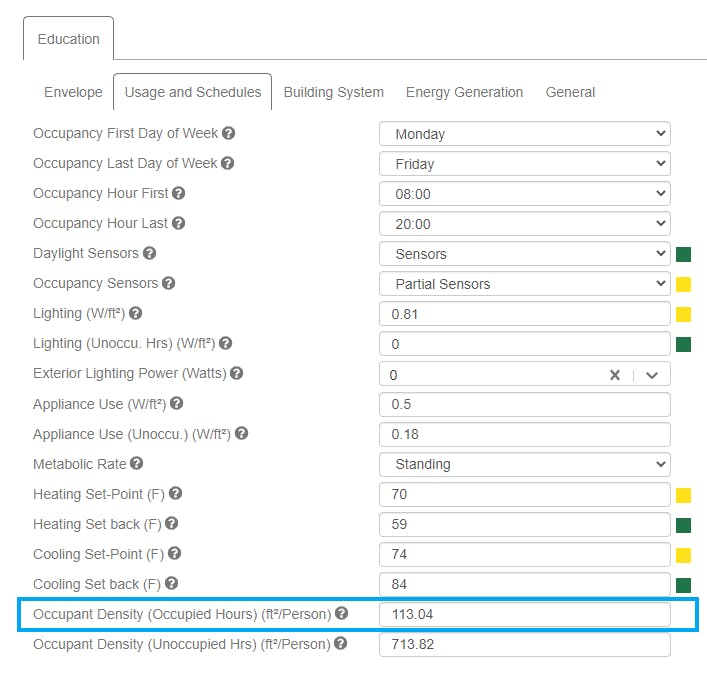
The example showcases a secondary school building prototype from Pacific Northwest National Laboratory (PNNL) located in Denver, Colorado and the energy code selected is ASHRAE 90.1 2016. The following chart shows the difference in EUI when the people density is changed from 75 ft2/person to 113.04 ft2/person. Since the number of people reduced, the heating demand went up and a net 0.14Kbtu/sqft/year impact on the building's EUI.
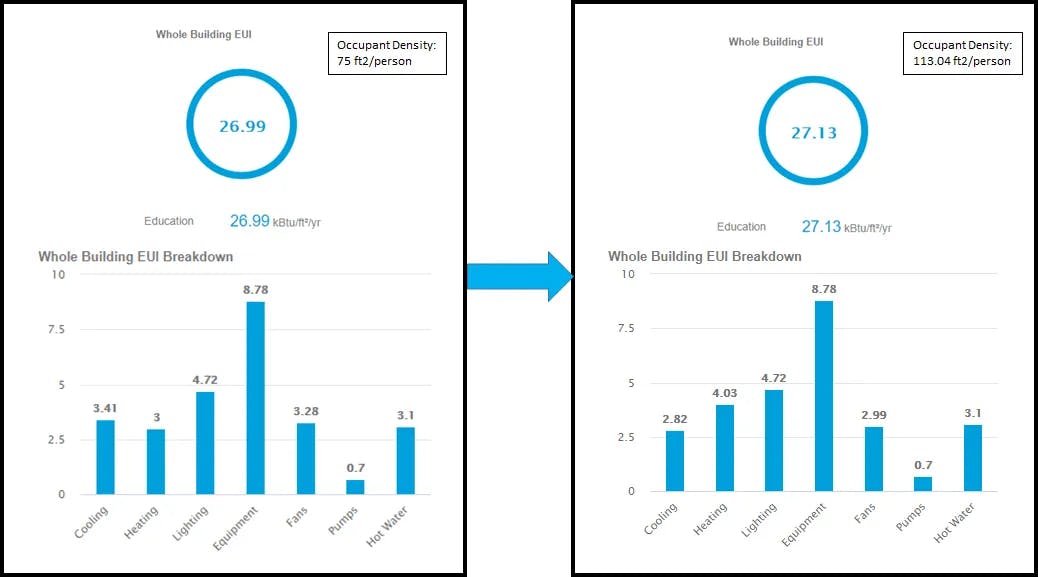
2. Adjusting the Ventilation Rate (CFM)
Based on the adjusted occupant density, total CFM value should be modified. The CFM/person rates based on the energy codes like ASHRAE 62.1 and California Title 24 should be referred.
100% outside air seems unnecessary for building types such as offices, schools and retail since ASHRAE 170, which is the standard for hospital ventilation, allows for recirculated air in most zones.
Also, according to the research paper by Pantelic and Tham, the increase in air changes per hour (ACH) will not lead to improvement of disease propagation. Therefore, it is safe to conclude that minimum ventilation rates from standards like ASHRAE 62.1 and Title 24 are still favorable considering the energy consumption.
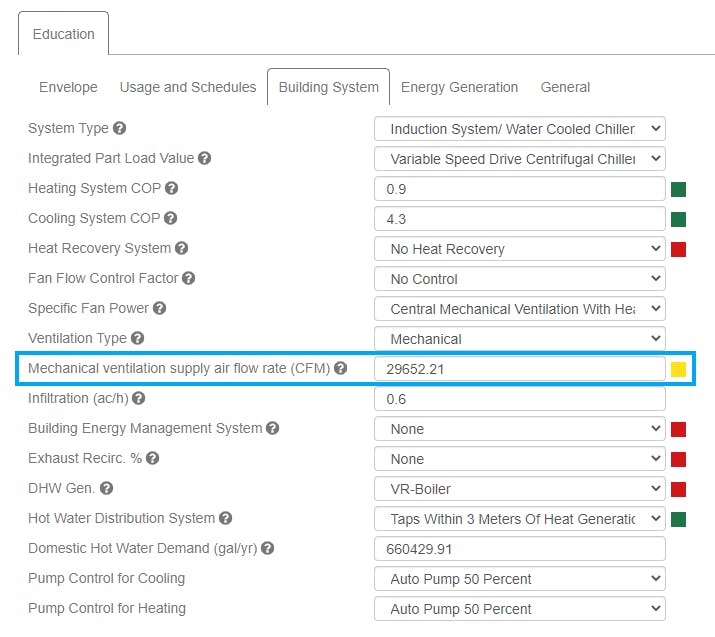
3. System Operation Time
There has been a lot of discussion about running the ventilation system 24/7. It is important to keep in mind that the energy impact of running a system 24/7, roughly double the normal schedule for non-residential buildings, is significant. This is especially true with constant volume systems where fan energy would double. The following chart compares the EUI when the system is running 24/7:

Instead of running the system at full capacity 24/7, a better solution would be to keep the ventilation on 24/7 but at lowered capacity when the building is not occupied to remove the particles outside the building. Additionally, it is highly recommended to switch the ventilation systems "on" at full capacity an hour or couple hours before the occupancy of the building. Please refer to this article for converting the fractional schedule to cove.tool's format.
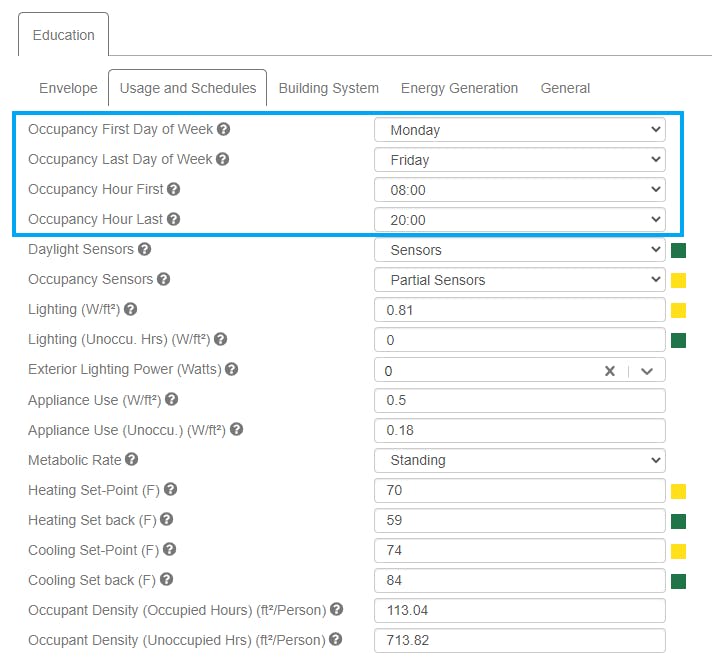
If natural ventilation is used for the building, it is recommended to actively use operable windows for 15-30 mins after entering the room especially if the space was occupied beforehand to further reduce the risk.
Here are a few additional recommended practices aimed towards curbing the spread of Covid-19:
Install filters which have Minimum Efficiency Reporting Value (MERV) of 13 or higher at fresh air ducts and MERV 16 at recirculated air ducts.
Disable the Demand Control Ventilation (DCV).
Disable the use of ceiling fans.
Disable the occupancy sensor standby status i.e. set it to ‘occupied’.
Monitor and maintain relative humidity levels preferably at 40-60%
For more information, check out AIA Re-occupancy Assessment Tool V3.0
